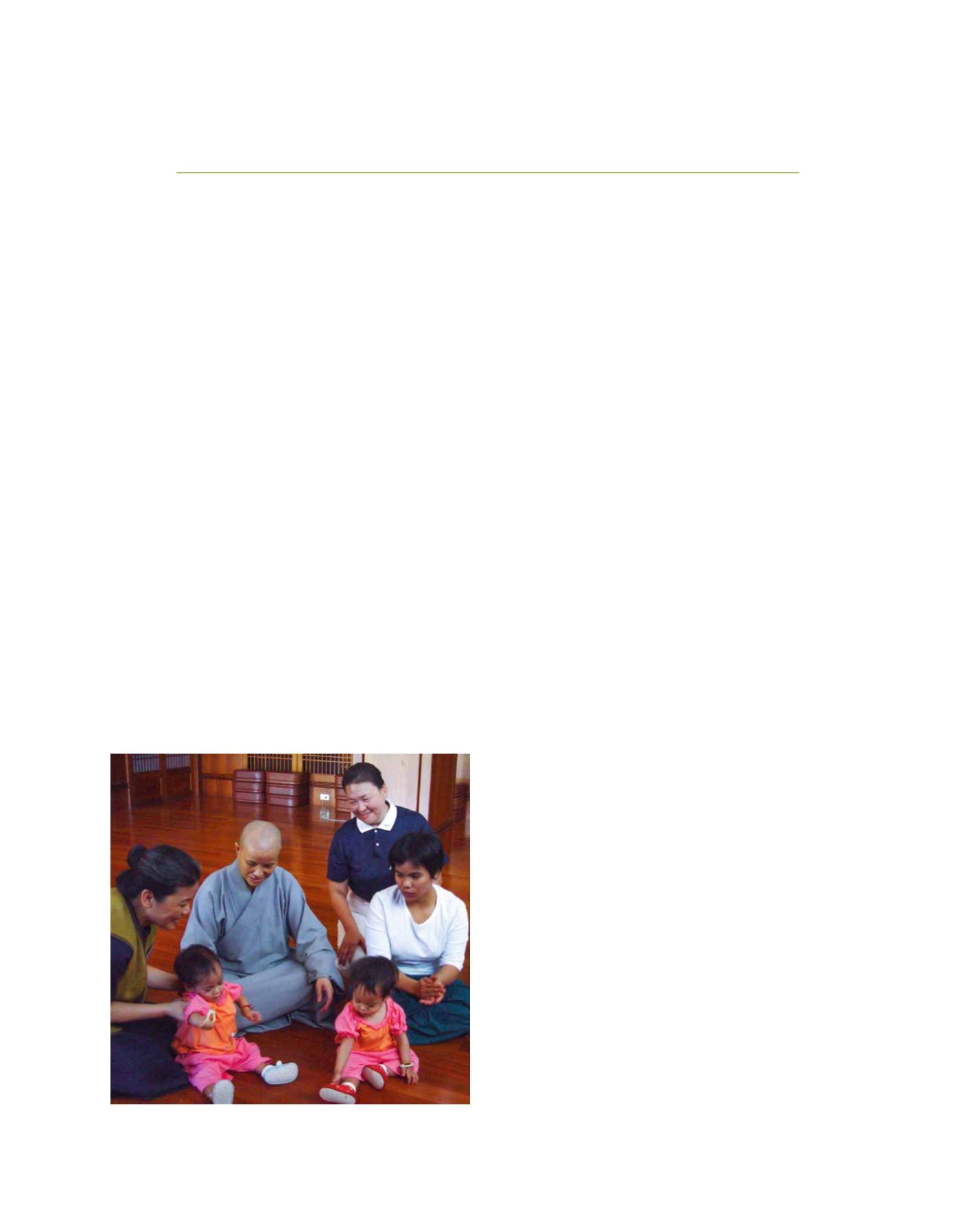

[
] 15
What does it mean, to be empowered?
Hanford Lin, Chien-Cheng Yang, Debra Boudreaux and contributing author
Dharma Master Cheng Yen, Buddhist Tzu Chi Foundation
O
n a sunny spring day in 1966 in the small island
country of Taiwan, an indigenous woman was
carried into a small medical clinic, bleeding
profusely from labour complications. Her family had been
carrying her from the mountains where they lived, walking
eight hours in the scorching heat. When they arrived at the
hospital, however, they were turned away; they could not
afford the NT$8,000 deposit fee required for her treatment.
A young Buddhist nun, or Dharma Master, who was visiting
a patient at the time, saw the trail of blood left by this woman
and learned of her plight. Overcome by sorrow, she fashioned
simple coin containers out of bamboo. The Dharma Master,
five female disciples and 30 housewives, put just a penny of
their grocery money into their bamboo banks each day, start-
ing a movement that grew and spread across the neighbouring
villages, with patrons travelling far and wide each day to make
their small contributions. “The spirit of giving,” she teaches,
“must be renewed each day, and it is the constant thought of
giving that matters, not the amount that was contributed.”
This is a kind of actionable meditation, or as the organization
terms it, ‘Buddhism in Action’. With the money collected from
the daily contributions, they paid for life-saving surgeries for
those who were unable to afford them. Six years later, using
the same model, the band of monastics proceeded to build
a medical clinic with the money they saved, providing free
quality health care from volunteer doctors.
The Venerable Dharma Master’s name was Shih Cheng Yen,
and the medical clinic she built became the first health facil-
ity of the Tzu Chi Foundation, the beginning of a grass-roots
movement that has since grown into a large international
humanitarian organization, with a membership of over 10
million spread across 94 countries. These women established
a commitment to doing good deeds under the guidance of
Buddhist teachings and demonstrated the strength to overcome
overwhelming obstacles, inspiring millions to come together
to commit to a common cause. This model was not merely a
programmatic one, but also one for the concept of empower-
ment in the aid and development programmes implemented
around the world, one that not only educates those who are at
severe disadvantage, but inspires them to contribute positively
through the realization of their own riches and capabilities.
With the spirit of compassion and experience working with
socioeconomically disadvantaged populations, Cheng Yen
and Tzu Chi began to engage in aid and relief work based
around the sentiment of universal love and the concept of
empowerment of the vulnerable. However, it can be argued
that empowerment is based upon a flawed mindset and frame-
work; moreover, the language and culture of understanding
within the humanitarian space surrounding empowerment is
one that is actually disempowering, implying that power is
bestowed by more powerful entities. This leaves the underly-
ing conflict of whether one can truly have power, or in the
context of humanitarianism, ownership and agency, if it is
given: a conflict caused by an arguably flawed framework that
is coined as ‘paternal’.
Taking this conflict to heart, Tzu Chi began engaging in
empowerment projects with the mindset that power is inher-
ent; and though Tzu Chi does indeed give, it gives aid with
two hands and a bow, showing that both giver and receiver
are one and the same, lifting the veil and illusion of power-
lessness. Establishing compassion, education and inspiration
as the basic pillars, Cheng Yen and her now internationally
recognized organization, with special consultative United
Nations Economic and Social Council status, began to imple-
ment projects that went further than merely providing and
giving aid. These projects revolved around innovation and
partnerships, which are the key to inclusiveness. They were
projects that, like the movement she began in 1966 with her
30 female followers, reveal the strength that is inherent in all.
Dharma Master Cheng Yen plays with formerly conjoined twins Rachel and
Lea days after Tzu Chi’s doctors performed surgery to separate them
Image: Buddhist Tzu Chi Foundation
G
ender
E
quality
and
W
omen
’
s
E
mpowerment
















